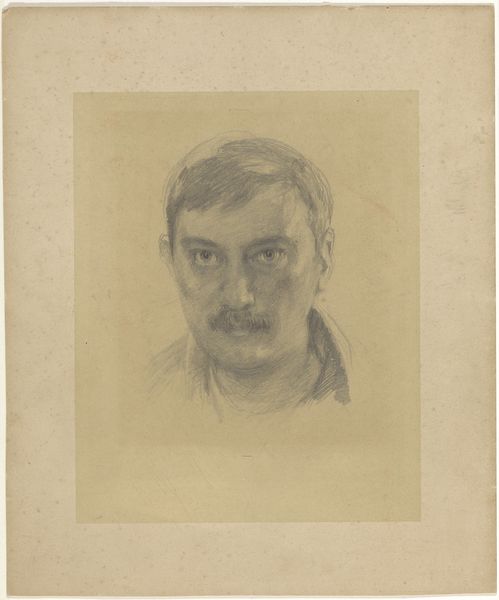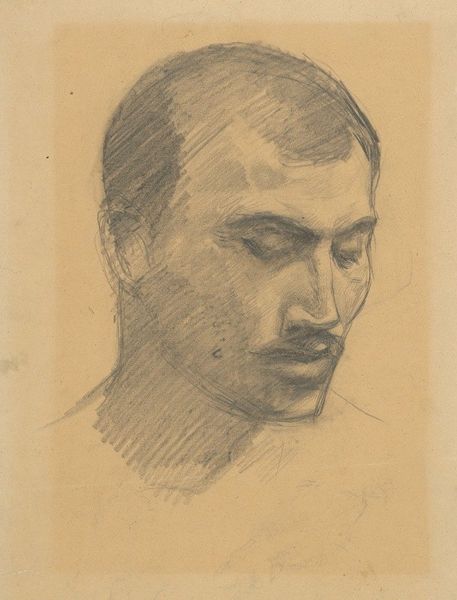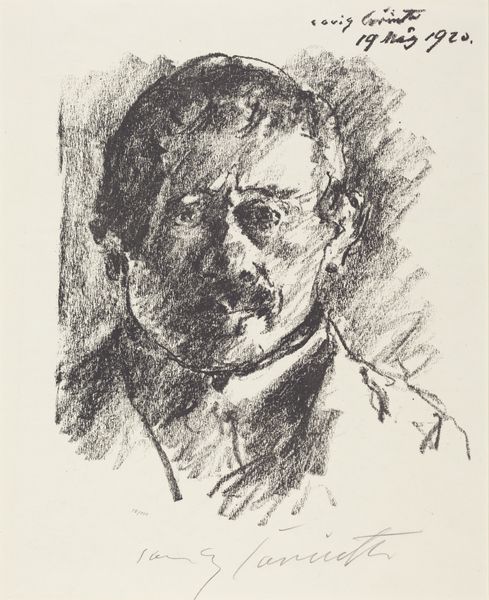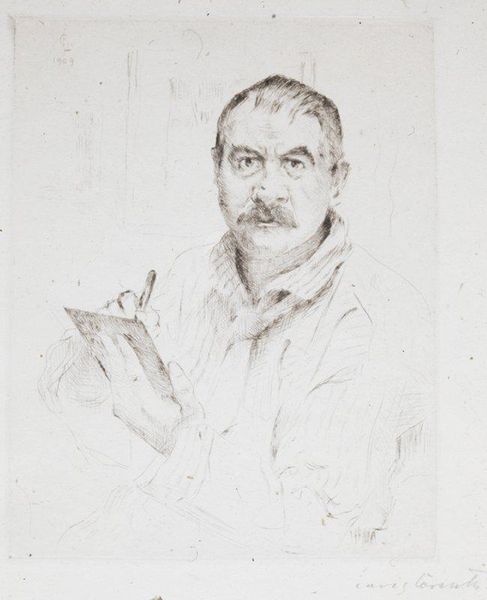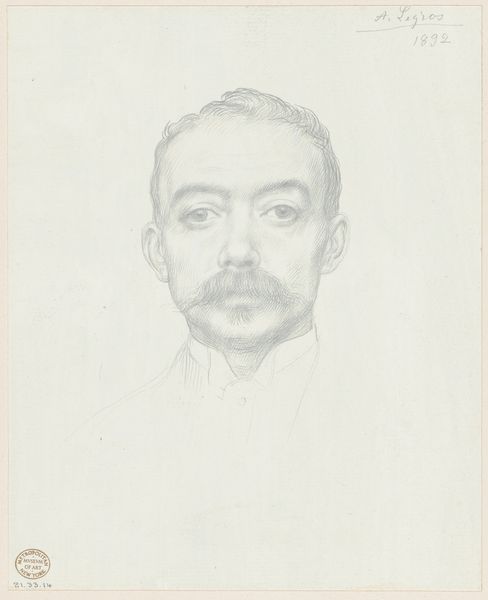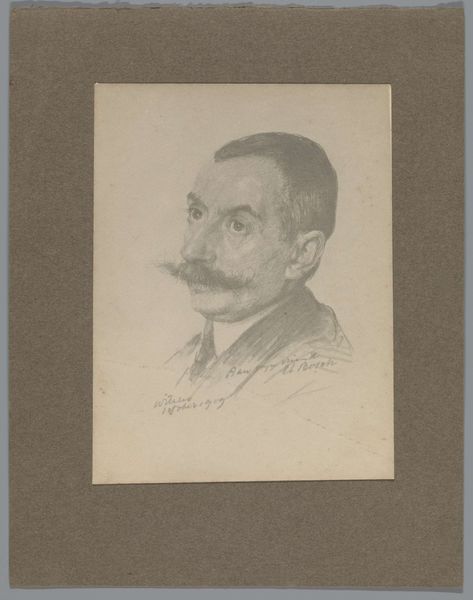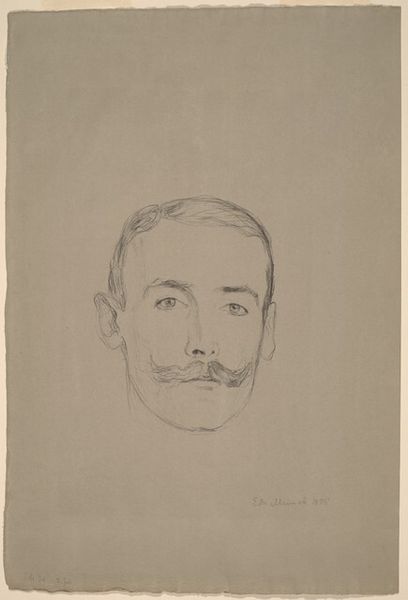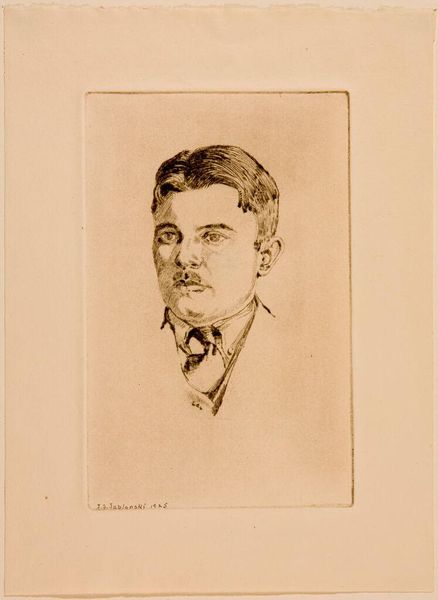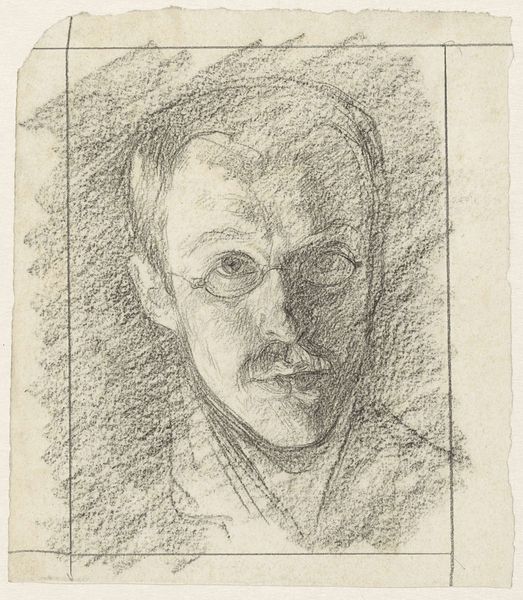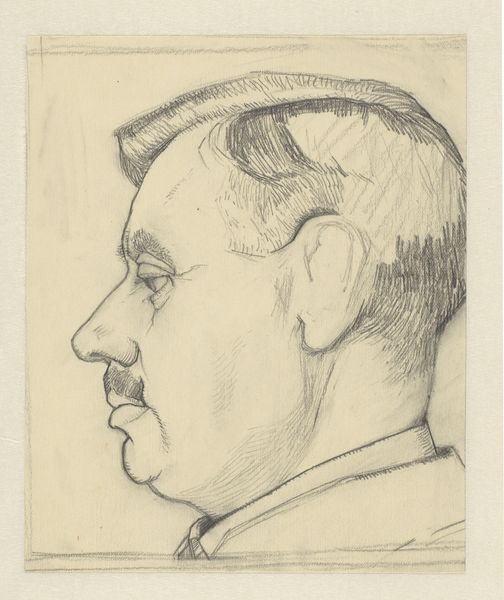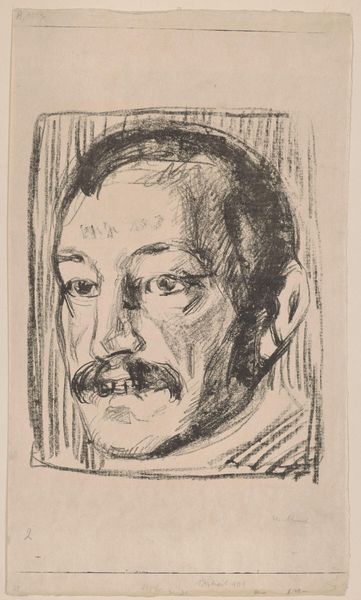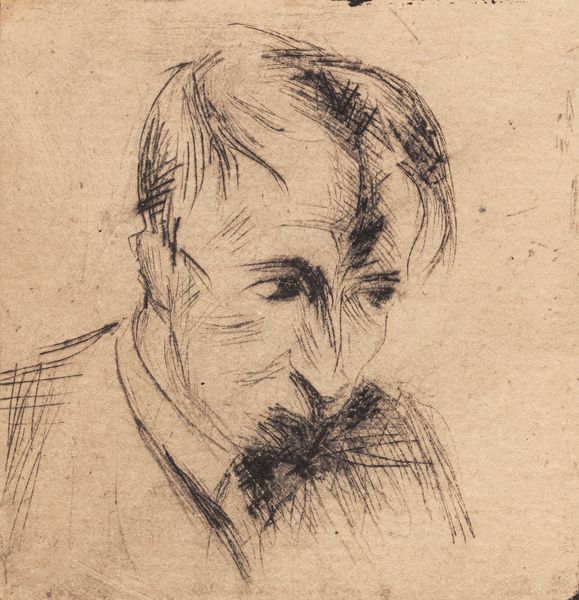
drawing, pencil, graphite
#
portrait
#
pencil drawn
#
drawing
#
light pencil work
#
self-portrait
#
yellowing background
#
pencil sketch
#
portrait reference
#
pencil drawing
#
pencil
#
limited contrast and shading
#
graphite
#
portrait drawing
#
pencil work
#
tonal art
#
academic-art
#
realism
Dimensions: height 223 mm, width 169 mm, height 300 mm, width 225 mm
Copyright: Rijks Museum: Open Domain
Editor: Here we have "Reproductie naar tekening met zelfportret van Willem Witsen," a self-portrait drawing by Willem Witsen, dating somewhere between 1860 and 1915. The pencil work gives it such a soft, intimate feel. What can you tell me about this piece? Curator: As a materialist, I’m immediately drawn to the process and the implications of a self-portrait executed in pencil during this period. What labor went into sourcing these materials? Where was the graphite mined, how was the paper manufactured, and who were the unseen hands involved? Consider that the making of even a seemingly simple sketch involves an entire network of production. Editor: That's a perspective I hadn't considered. I was focusing on Witsen himself, and his artistic intention. Curator: Indeed, intention is part of it, but it's crucial to move beyond the romantic idea of the solitary artist. The choice of pencil, rather than, say, oil paint, speaks to a certain accessibility and perhaps a more democratic approach to art making. Was this intended as a study, a preparatory sketch? And how does its reproductive nature alter the work's initial value? Editor: So you’re saying that by focusing on the materials, we can better understand the social and economic forces at play in Witsen’s artistic practice? Curator: Precisely. Think about how the rise of industrial production influenced the availability and affordability of these materials, shaping the artistic landscape. What was the cost of materials relative to the likely commission? These considerations help demystify art production. Editor: That’s fascinating. It really shifts my focus from the individual to the broader material conditions of art making. Curator: And what better way to analyze any piece than considering its foundations? Editor: I will never look at a drawing the same way. Thanks for your expertise!
Comments
No comments
Be the first to comment and join the conversation on the ultimate creative platform.

